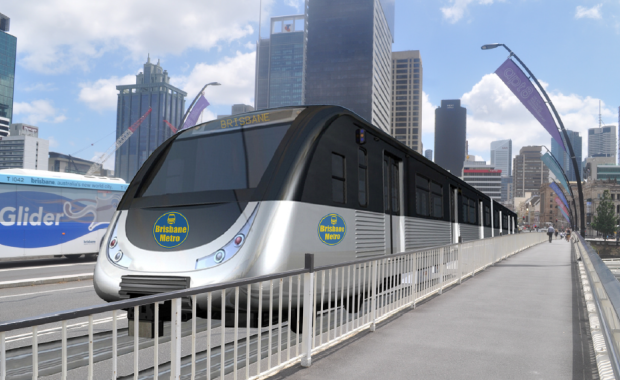Brisbane New World – Brisbane Metro
Brisbane Metro is a high-frequency public transport system that will cut travel times, reduce CBD bus congestion and improve services to the suburbs. By fixing critical bottlenecks in the inner-city, and introducing new, high-capacity metro vehicles, it will provide a cost-effective solution to Brisbane’s bus congestion issues.
The scope of the Brisbane Metro has been expanded to provide a network across 21 kilometres of existing busway that links the Eight Mile Plains, Royal Brisbane and Women’s Hospital (RBWH) and University of Queensland (UQ) Lakes and all busway stations in between, and will include two new high-capacity, high-frequency metro lines.
Council is now proceeding to the next stages of project planning, which includes further defining the impacts, benefits and opportunities of Brisbane Metro in partnership with key stakeholders and the community.
A new fleet of around 60 high capacity bi-articulated Metro vehicles will be introduced, each able to carry up to 150 passengers. This will allow Metro services to use the existing busway along with other regular bus services and result in fewer impacts during construction as there is no longer a need to install dedicated Metro tracks.
The expanded Brisbane Metro provides more opportunities for people to transfer seamlessly between bus, rail and Metro, with 11 interchange locations across the network. This includes two connections to the Queensland Government’s proposed Cross River Rail project, allowing people to transfer to Metro services at Boggo Road station and Roma Street station to access destinations not serviced by rail.
By extending Metro services beyond the inner city, the revised project improves connections between key knowledge and health hubs such as UQ, RBWH, Mater Hospital, Griffith University, QUT and the PA Hospital. Providing fast, reliable public transport to these destinations, along with the CBD, will be critical to supporting jobs growth and encouraging economic development.
On-site monitoring and testing at various locations adjacent to the Brisbane Metro routes began in October, with the concept design to be released in November.
Two crucial parcels of land in South Brisbane and Rochedale are currently being purchased which will allow the $994 million project to move to the next step. The land on Grey Street at South Brisbane is for the new underground busway station which will be built directly beneath the busy Melbourne and Grey Street intersection, while the land at Rochedale will become the depot for the new articulated buses.
Queensland opposition leader Tim Nicholls committed to $20 million of state government land for the metro and a $10 million investment to explore metro extensions into Springwood, Coorparoo and Chermside if elected in the coming election.
More information is available on the Brisbane City Council website.
Source: The Urban Developer
Originally published: 6th September 2016
Updated: 10th November 2017

